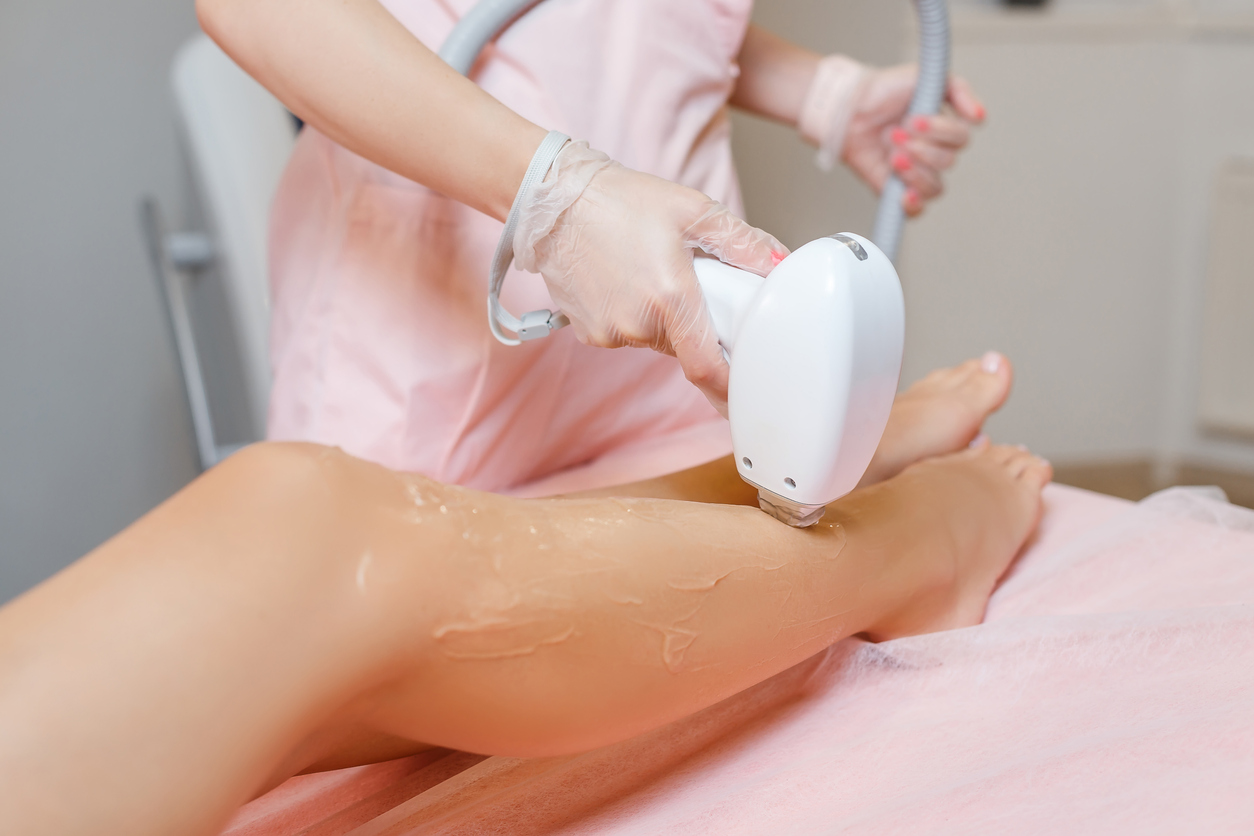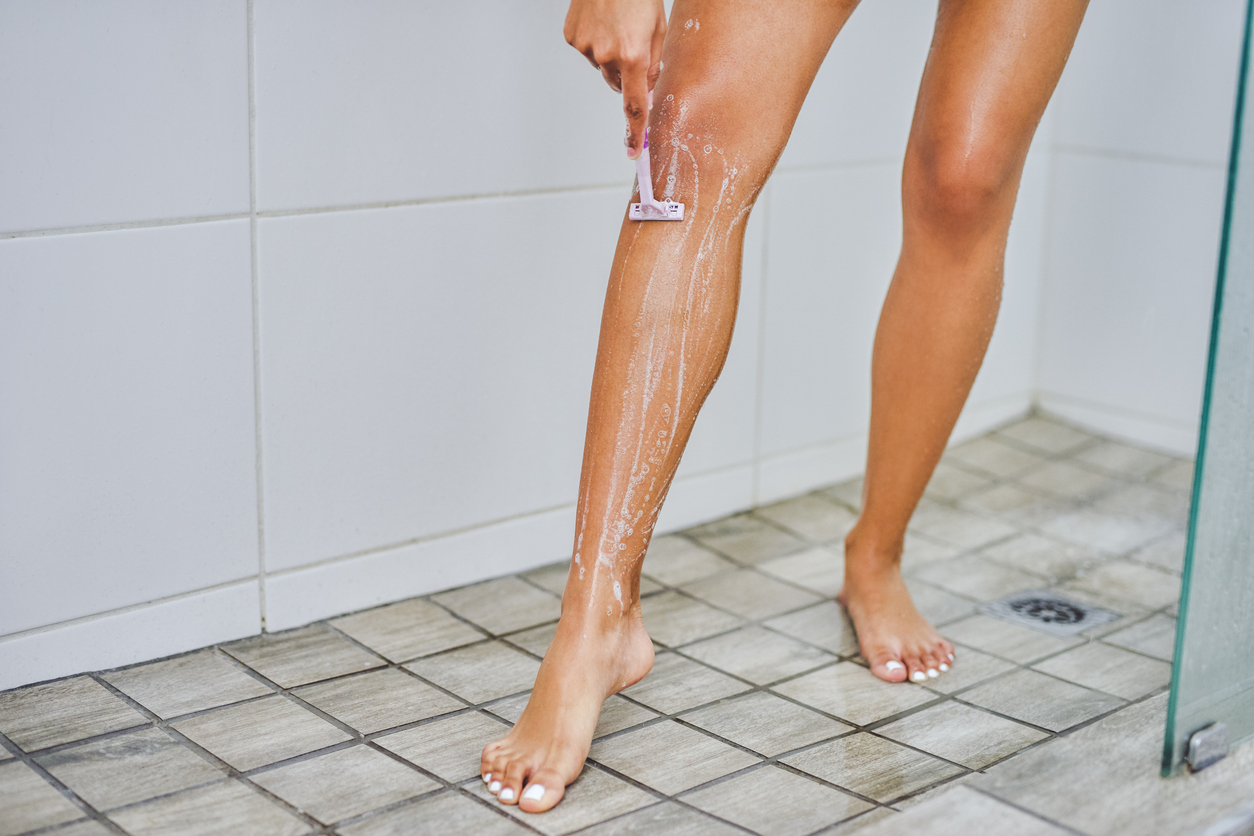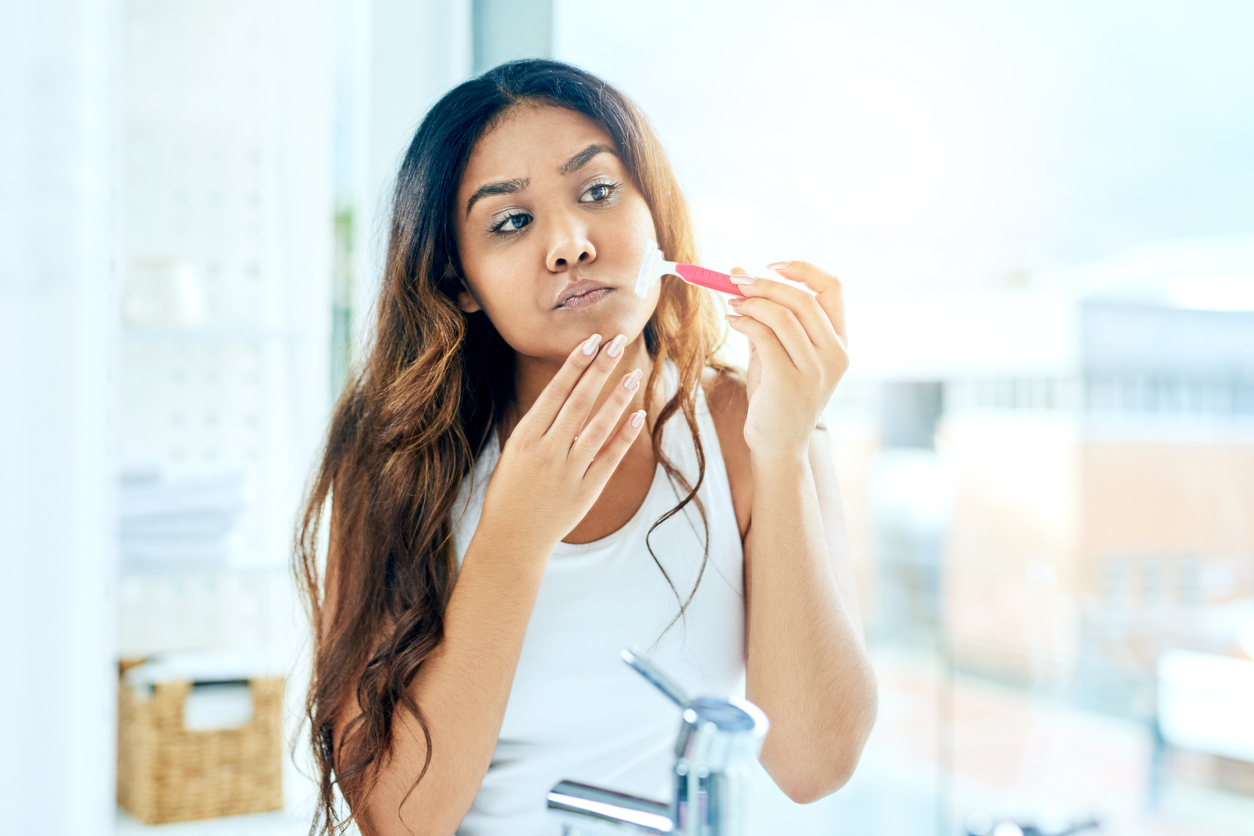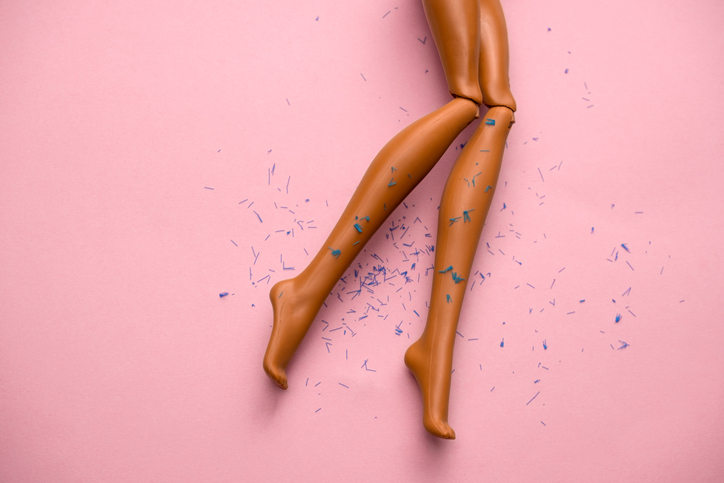In lots of countries, it’s common for women to remove some of their body or facial hair. As a result, there’s now a wide range of techniques and products to help us get rid of what’s thought of as ‘excess’ hair.
Whether you remove any hair is completely up to you. In many cases, it’s just down to personal preference. But if you feel like you have more hair than you should, it can also knock your self-esteem.
Maybe you’ve noticed some dark hairs on your face since going through the menopause? Or you have a health condition that means you have excessive hair growth on some parts of your body (hirsutism)?
We understand that hair removal can be important for your emotional wellbeing and body confidence. So read on for all you need to know about plucking, shaving, waxing and epilating – so you can find the best hair removal method for you.
Hair removal methods
Trimming
The how-to: You use scissors and a comb, or an electric trimmer, to reduce the length of your hair.
Pros:
- simple – trimming hair is easy to do and takes just a few minutes
- low-cost – scissors or a trimmer are fairly affordable, and you only need to buy them once
- can be done at home – making it convenient and safe
- painless – unless you accidentally cut or poke your skin (see ‘cons’)
- less likely to cause ingrown hairs – than methods that cut hair very close to the skin (shaving) or remove hairs from the root (plucking and waxing)
Cons:
- not complete hair removal – trimming shapes and tidies, but you’ll still have some hair
- doesn’t last long – depending on how quickly your hair grows, you’ll need to trim it every few days
- risk of cuts – so take your time and go gently
Getting the best from this method:
- with scissors, make sure they’re sharp, and use the comb’s teeth as a guide to help you avoid slips and cuts
- with an electric trimmer, trim in the direction that your hair grows in, and choose the longer setting for your first go. Want to go shorter? Adjust the setting and move the trimmer against the growth next time
- if you’re using an electric trimmer to get a closer trim, first cut any longer hairs using scissors. This helps avoid clogging the trimmer, and allows you to see the direction of hair growth
- clean your scissors and trimmer between uses, then allow them to air-dry, to avoid bacteria build-up (follow any cleaning instructions that come with your trimmer)
Shaving
The how-to: You ‘wet shave’ using a manual razor, water and shaving cream or balm (some razors have balm added to the blade), or ‘dry shave’ using an electric razor and no water.
Pros:
- quick and easy – it doesn’t take long to shave, and can be a good way to remove lots of unwanted hair in one go
- can be used on any part of the body – including your underarms, legs and bikini line
- pain-free – as long as you’re careful and don’t cut yourself, it shouldn’t cause any pain
Cons:
- hair grows back quickly – you’ll need to shave every few days (if not every day) to keep hair at bay
- may lead to cuts – minimise the risk by going carefully (see ‘getting the best from this method’)
- can irritate your skin – side effects can include itching, ‘razor burn’, pimples, blisters, ingrown hairs or inflamed hair follicles. If you have acne, it may also make this worse
Getting the best from this method:
- when wet shaving, keep your skin moist and warm – try shaving in (or after) a shower or bath
- use a shaving cream or gel, and apply it a few minutes before you start shaving to help soften the hairs
- shave lightly, using a sharp blade, and avoid going over the same area more than once to minimise irritation
- work in the direction your hair grows in to help prevent ingrown hairs and razor burn
- rinse your razor after every swipe, and change your blade after every 5 to 7 shaves
- after shaving, apply moisturiser to soothe and rehydrate your skin
- air-dry your razor between uses to help stop bacteria growth
- if your skin is irritated or itchy afterwards, apply a mild steroid cream, such as hydrocortisone, and avoid shaving again until it’s better
Hair removal creams (depilatory creams)
The how-to: You apply a gel, cream or lotion to your skin, which contains chemicals that dissolve the hair.
Pros:
- no stubble – hair is dissolved at the shaft, which gives a smooth result
- easy to use – you apply the product, wait for the hair to dissolve (about 5 to 10 minutes), then rinse it off
- low-cost – prices vary, but products are generally inexpensive and you get multiple uses from them
- painless – when used correctly, they shouldn’t cause any pain
Cons:
- may irritate your skin – the chemicals cause irritation in some people, especially if you have sensitive skin. It’s best to do a patch test before use (see ‘getting the best from this method’)
- smelly – products often have a funny smell, sometimes described as being like rotten eggs. This is caused by the chemical reaction between your hair and the cream
- not always suitable for all areas of the body – check the label before use
- may work less well on thick or coarse hair – such as beards
Getting the best from this method:
- make sure the product is suitable for the area you want to use it on
- always do a patch test before using a product for the first time, to check it doesn’t irritate your skin
- carefully follow the instructions that come with the product
- don’t leave the product on for longer than instructed – chemical burns may be a risk if creams are left on for too long
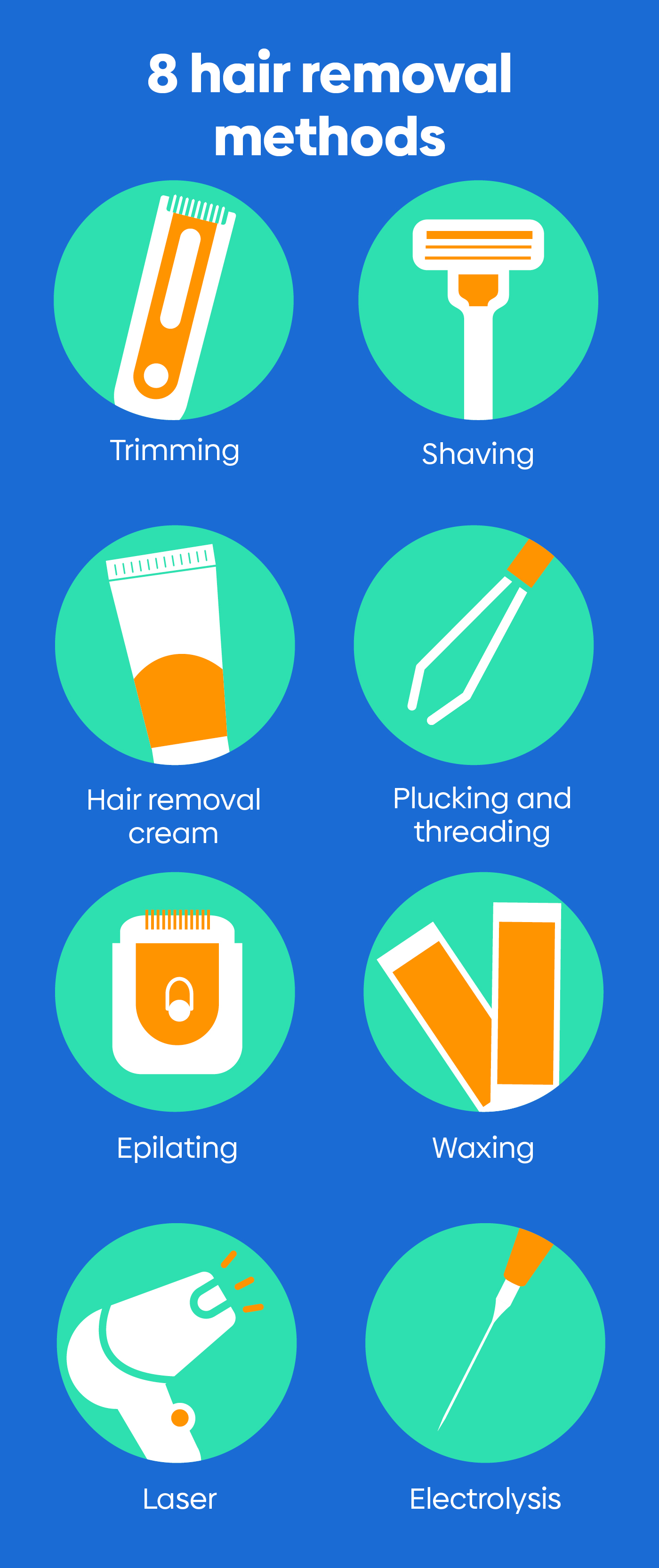
Plucking and threading
The how-to: You pluck out hairs 1 by 1 using tweezers. Threading involves using a long loop of cotton thread to pull unwanted hairs out from the root.
Pros:
- good for removing small amounts of facial hair – such as on your eyebrows, upper lip or chin
- very quick – especially threading, as it removes lots of hairs at once
- plucking is easy to do yourself at home
- longer-lasting than some methods – as hair is pulled out from the root
Cons:
- time-consuming – not suitable for removing large areas of hair
- can be painful when the hair is pulled out – but it’s short-term pain
- risk of irritation – can cause ingrown hairs or irritated or infected hair follicles, leaving small red bumps
- threading is usually best done by a salon professional – see below
Getting the best from this method:
- if you’re plucking at home, make sure your tweezers are clean to reduce the chances of infection
- threading is best done at a salon at first – if you want to do it yourself, it can take a while to perfect the technique. And if you don’t get it right, you might end up with uneven eyebrows or a higher risk of ingrown hairs
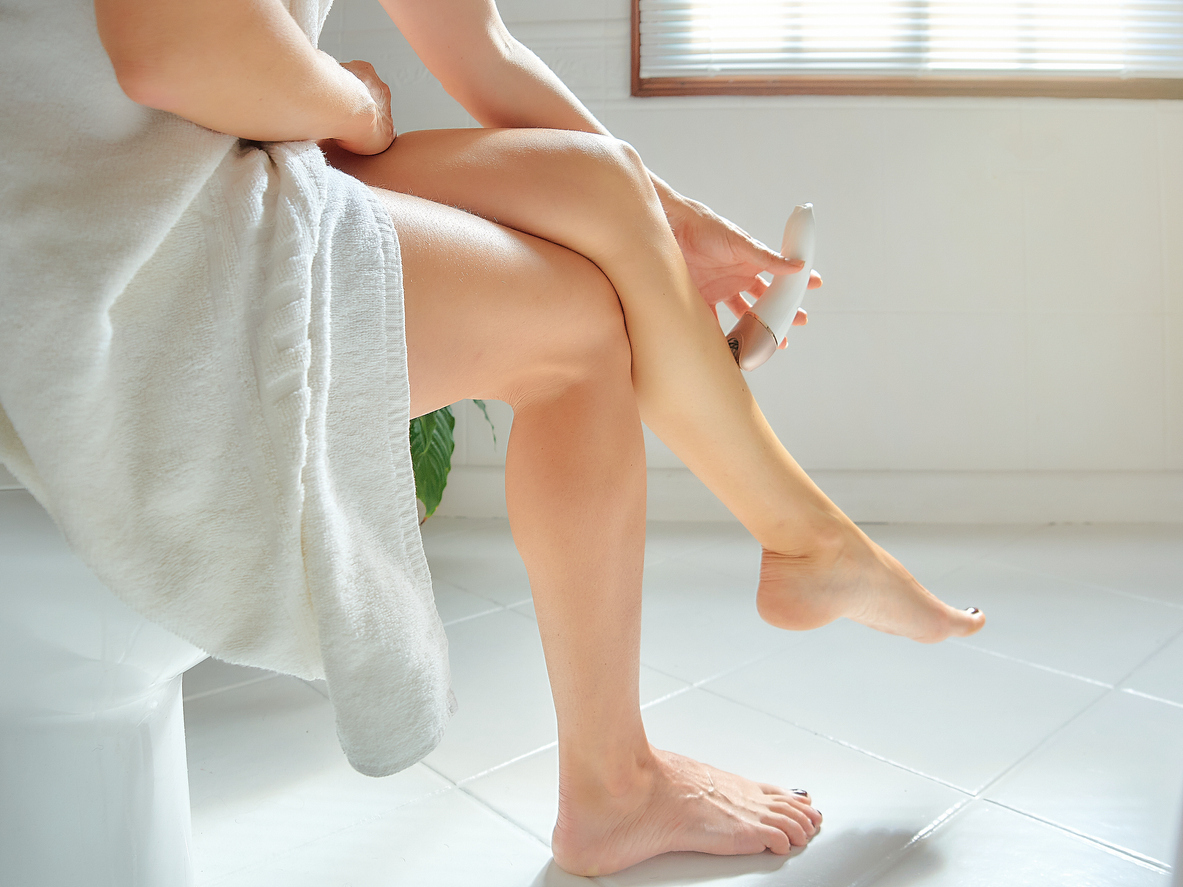
Epilating
The how-to: You use an electrical device called an epilator to remove hair directly from the root. Like shavers, there are ‘wet’ and ‘dry’ options.
Pros:
- good for removing short hairs – unlike waxing (see below)
- suitable for different areas of the body – including your arms, legs, face and pubic area
- longer-lasting results – because hair is pulled out at the root, epilation can leave skin smoother for longer than some other methods
- safe at-home treatment – just be sure to read the instructions
Cons:
- sometimes painful – as hair is pulled out from the root
- may cause skin irritation – possible side effects include scarring, ingrown hairs and inflamed hair follicles (folliculitis)
- can be more expensive – epilators vary in price, so it’s worth shopping around to find the one that best suits your needs
Getting the best from this method:
- keep the epilator at a 90-degree angle to your skin
- go against the direction of hair growth
- hold your skin taut while you epilate
- apply moisturiser afterwards
Some epilator manufacturers recommend:
- taking a warm bath or shower and exfoliating beforehand, to help reduce the risk of ingrown hairs
- applying shower gel to your skin for wet epilation, and making sure skin is completely dry for dry epilation
Waxing (hot, strips, sugaring)
The how-to: You apply hot or cold wax to your skin, then put a cotton or paper strip on top, which you rip off to remove the wax and hair. Sugaring uses a paste made from sugar, water and lemon juice instead of wax.
Pros:
- longer lasting than some methods – as it removes the entire hair shaft
- suitable for use on both large and small areas – such as your legs and upper lip
- can be done at home or at a salon – you can buy kits from a pharmacy or supermarket, or have it done by a salon professional
Cons:
- painful – arguably the most painful way to remove hair
- not always easy to do yourself – some areas are harder to reach than others, so it may be tricky to remove hair effectively
- takes time – depending on the size of the area you’re treating, waxing can be time-consuming
- risk of burns – if you apply the wax when it’s too hot
- can cause skin irritation – as with other methods that pull hair out at the root, waxing can leave bumps and ingrown hairs. You should be especially careful if waxing your face
Getting the best from this method:
- don’t wax skin that’s broken, irritated or sunburnt – you might want to get delicate areas waxed at a salon
- waxing will be more effective and less painful if the hairs aren’t too long or too short – between 0.6cm and 2cm is ideal (trim them first if they’re longer)
- take a painkiller or apply a cold pack to your skin beforehand to help reduce discomfort
- wash and dry the area to be waxed to remove dirt, dead skin cells and skincare products
- after waxing, apply a moisturiser to hydrate and soothe – choose one labelled ‘oil-free’ or ‘non-comedogenic’ to avoid blocking pores
- apply a cold pack to your skin if you’re have soreness afterwards
- avoid hot baths and showers and wear comfortable, loose clothes until any irritation or discomfort settles
Laser hair removal and electrolysis
Looking for longer-term hair removal? Electrolysis and laser hair removal are permanent and semi-permanent options, though they’re generally more expensive and time-consuming than the methods here.
Find out more about laser hair removal and electrolysis.
Doctor’s tip
“Try out different hair removal methods to see which fits your lifestyle and gives the best results for you,” advises Dr Ann Nainan, Healthily Clinical Content Reviewer. “How much hair you feel comfortable with will also be a factor – with waxing, for example, you have to let your hair grow back to a certain length, and you might not be comfortable with that.”
When to speak to a doctor
Hair removal is a personal choice – unless you’re having an operation, it isn’t something you need to do for medical reasons. So it’s unlikely that you’ll need to talk to your doctor.
However, it’s a good idea to see a doctor if you:
- have a shaving rash that’s spreading or not going away after a few days
- get burns or scars after hair removal
- notice your skin changing colour
- feel you have more hair than normal (hirsutism)



